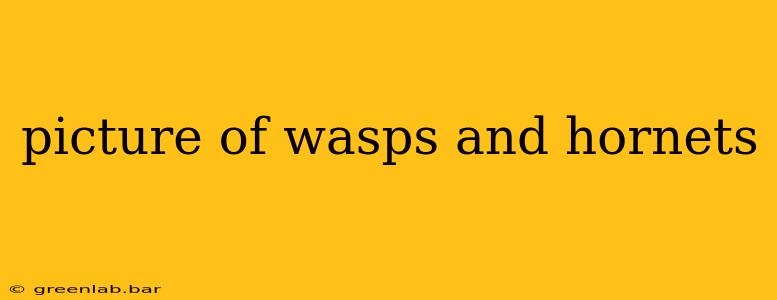Understanding Wasps and Hornets: A Comprehensive Guide to Identification and Safety
Identifying wasps and hornets can be tricky, as they share many similar characteristics. However, understanding their key differences is crucial for safety and appreciating their ecological roles. This comprehensive guide will delve into the visual distinctions, behavioral patterns, and potential dangers associated with these stinging insects.
Differentiating Wasps and Hornets: Key Visual Clues
While both belong to the Vespidae family, wasps and hornets exhibit distinct features:
Size and Shape: Hornets are generally larger than wasps, often reaching lengths exceeding an inch. Wasps are more variable in size, ranging from tiny parasitic wasps to the larger, more familiar yellow jackets. Hornets tend to have a broader, more robust body compared to the slender build of many wasp species.
Coloration: Hornets, like the European hornet ( Vespa crabro), often exhibit a reddish-brown head and thorax with yellow or brown stripes on their abdomen. Wasps display a wide array of colors and patterns, from the bright yellow and black of yellow jackets (Vespula) to the black and white of paper wasps (Polistes). Some wasps even mimic the appearance of bees for protection.
Nest Structure: Hornet nests are typically large, enclosed structures, often found high in trees or sheltered areas. Wasp nests can vary significantly depending on the species. Some build exposed combs, while others create enclosed nests in cavities. Paper wasps, for example, create open-comb nests often attached to eaves or under branches. Yellow jackets construct nests underground or in wall cavities.
Behavioral Differences: While generalizations can be misleading, hornets are often considered more aggressive when defending their nests, whereas some wasp species are less prone to stinging unless directly threatened. However, always maintain a safe distance from both. Both hornets and wasps are social insects living in colonies with a queen, workers, and drones.
Common Species: A Closer Look
Several species are frequently encountered:
- European Hornet (Vespa crabro): A large, reddish-brown hornet with yellow markings, it's often mistaken for a more aggressive species.
- Bald-faced Hornet (Dolichovespula maculata): A black and white hornet with a distinctive white face, known for building large, enclosed nests in trees.
- Yellow Jackets (Vespula species): These bright yellow and black wasps are notorious for their aggressive behavior when protecting their nests, often found underground or in wall cavities.
- Paper Wasps (Polistes species): These wasps build open-comb nests, and are generally less aggressive unless their nests are disturbed.
Safety Precautions Around Wasps and Hornets
Encountering wasps and hornets requires caution:
- Avoid sudden movements: Rapid movements can trigger a defensive response.
- Maintain a safe distance: Give nests a wide berth – a safe distance is usually several meters.
- Do not swat: Swatting will only agitate them.
- If stung, seek medical attention if necessary: Some individuals experience severe allergic reactions.
The Ecological Importance of Wasps and Hornets
Often misunderstood, wasps and hornets play a crucial role in ecosystems:
- Pest control: They are natural predators of various insects, helping regulate populations.
- Pollination: While not as efficient as bees, they contribute to pollination.
Understanding the nuances of wasp and hornet identification and behavior allows for safe co-existence and appreciation of their contribution to the environment. Always prioritize safety, and remember to admire these insects from a respectful distance.

